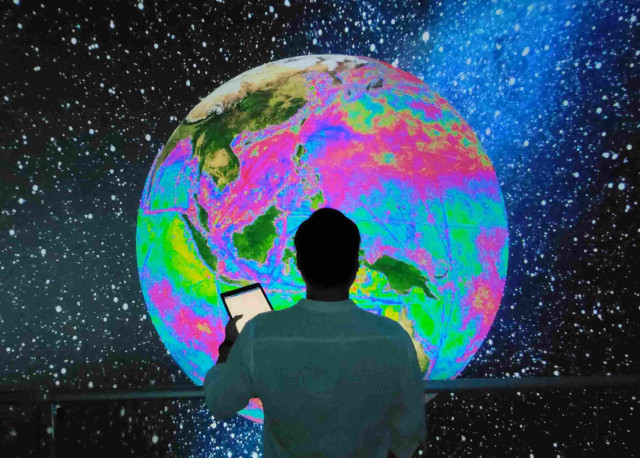
Sensorium: The Voice of the World Ocean
Description
Sensorium is inspired by the late Eco-Art Pioneer, Emeritus Professor Newton Harrison (UCSD) & Research Professor (UCSC) and conceived by the Center for the Study of the Force Majeure, based at the University of California, Santa Cruz.
Sensorium is both a work of art and science that sets out to synthesize the survival problems that the world ocean faces in our emerging heat shocked future. We believe that new and creative answers to questions regarding the ocean’s ability to regenerate and return to ecological well-being will emerge from integrating core artistic concepts and creative strategies with current scientific resources and modeling, generating a new synthesis that builds on the strengths of the underlying science and the perspective of the artistic experience. These thoughts underpin the design and the work of Sensorium.
Sensorium is not a computer game nor an entertainment medium. Sensorium will start as an educational tool and continually develop to become a communication laboratory, one that challenges its visitors to investigate phenomena by asking questions to listen and heighten their awareness. In so doing we hope to exercise a new way of thinking and acting in response to the requests from the Life Web that is in crisis.
»Everything is interrelated«, as Alexander von Humboldt phrased it, and this interrelation includes ecosystems, humankind as well as the arts and sciences – natural sciences, ethnology, information technology and architecture.
Sensorium follows this holistic approach as a matter of principle providing the means for new thinking, insight and action: Sensorium takes a generalist approach scanning the whole in all cases, becoming a specialist as circumstances require.
This work premieres at Pacific Standard Time (PST) 2024 as a part of the Getty Biennale.
Additional Links:
- Science introduction
- Installation introduction
- Project page
- Article










